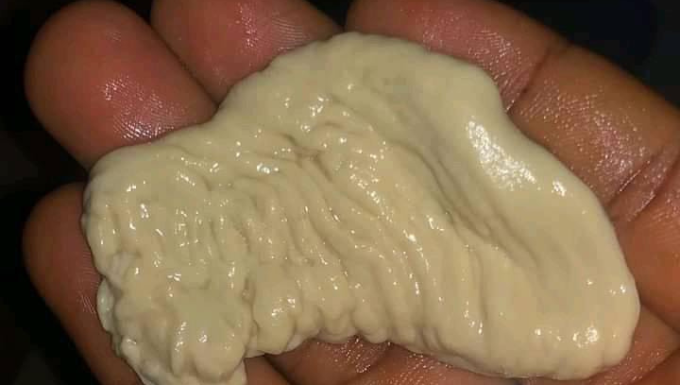Pictures of Yeast Infection in Vagina Yeast infection, medically known as vulvovaginal candidiasis, is a common condition that affects women worldwide.
While it can be uncomfortable and distressing, understanding its symptoms, causes, and treatment options is essential for early intervention and effective management.
In this article, we will explore yeast infection in detail, including visual representations of its symptoms to promote awareness and understanding.
Before we proceed, it’s crucial to note that the images included are for educational purposes, and viewer discretion is advised.
What is a Yeast Infection?
A yeast infection is a fungal infection caused by Candida albicans, a type of yeast that naturally resides in the vagina in small quantities.
Under certain conditions, such as hormonal changes or weakened immune systems, the yeast can multiply rapidly, leading to overgrowth and causing infection.
While yeast infections can occur in various parts of the body, including the mouth and skin, vulvovaginal candidiasis primarily affects the genital area of women.
Causes of Yeast Infection
Candida albicans are usually kept in check by the healthy bacteria present in the vagina.
However, several factors can disrupt this delicate balance and trigger a yeast infection. The most common causes include:
- Antibiotics: These medications, while effective against bacterial infections, can also kill the beneficial bacteria that regulate yeast growth.
- Hormonal Changes: Fluctuations in hormone levels during the menstrual cycle, pregnancy, or menopause can create an environment conducive to yeast overgrowth.
- Diabetes: Uncontrolled blood sugar levels provide an ideal breeding ground for yeast, increasing the risk of infections.
- Weakened Immune System: Illnesses like HIV/AIDS or certain medications can weaken the immune system’s ability to control yeast.
- Poor Hygiene: Inadequate cleaning of the genital area can lead to an accumulation of moisture and encourage yeast growth.
Identifying Yeast Infection Symptoms
Recognizing the symptoms of yeast infection is crucial for early detection and prompt treatment. Some of the common signs to watch out for include:
- Vaginal Itching and Irritation: Persistent itching in and around the vagina is one of the most prevalent symptoms of a yeast infection.
- Abnormal Discharge Characteristics: The discharge may be white, thick, and clumpy, resembling cottage cheese.
- Burning Sensation During Urination: Irritation caused by the infection can lead to discomfort during urination.
- Redness and Swelling: The vulva may appear red, swollen, and sore to the touch.
While these symptoms are typical indicators of a yeast infection, it’s essential to seek medical confirmation for accurate diagnosis and appropriate treatment.
The Impact of Yeast Infection on Vaginas
For virginal health, maintaining a balanced vaginal flora is crucial. The presence of Candida albicans in excessive amounts can disrupt this balance, leading to yeast infection.
It is vital to understand the specific context of vaginias concerning yeast infections to ensure proper care and treatment.
Vaginas are unique and delicate, and any infection can be particularly distressing. Yeast infections can occur in women of all ages, regardless of sexual activity.
Proper education and awareness are necessary to address concerns related to virginal health and hygiene.
Pictures of Yeast Infection in Vagina
Visual representation of symptoms can be beneficial in understanding yeast infections and promoting awareness.
However, it is essential to approach these images with sensitivity and respect for the viewer’s privacy.
As we present pictures of yeast infection in the vagina for educational purposes, we emphasize the importance of discretion and the potential emotional impact such visuals may have.
The following images are intended to provide a visual reference to common symptoms of yeast infection:



While these images provide a visual understanding of yeast infection symptoms, it is crucial to remember that each person’s experience may vary.
Moreover, the images should not be used to self-diagnose but rather as a reference when seeking medical guidance.
Over-the-Counter Treatment Options
If you suspect a yeast infection based on the symptoms depicted in the images or personal experiences, several over-the-counter (OTC) treatments are available.
These medications are designed to combat fungal infections and provide relief from symptoms. Some common OTC treatment options include:
- Antifungal Creams and Suppositories: These products contain active ingredients like clotrimazole or miconazole, which help eliminate the yeast and reduce discomfort.
- Precautions and Side Effects: While OTC treatments are generally safe, it is essential to follow the instructions carefully and be aware of potential side effects, such as skin irritation or allergic reactions.
Natural Remedies for Yeast Infection
In addition to OTC treatments, some individuals prefer natural remedies to manage yeast infections. These remedies aim to restore the vaginal flora and maintain a healthy balance. A few effective natural options include:
- Probiotics and Their Role: Probiotics, commonly found in yogurt or available as supplements, can help restore the natural balance of bacteria in the vagina, thus reducing yeast overgrowth.
- Tea Tree Oil and Its Benefits: Tea tree oil has antifungal properties and can be diluted and applied topically to soothe discomfort and aid in the recovery process.
- Yogurt Applications: Applying plain, unsweetened yogurt to the affected area may provide relief from itching and burning sensations.
It’s crucial to consult a healthcare professional before trying any natural remedy to ensure compatibility with individual health conditions.
Seeking Medical Advice
While OTC treatments and natural remedies may offer relief, it is essential to seek medical advice if:
- The symptoms persist despite treatment attempts.
- There is uncertainty about the nature of the infection.
- Recurrent yeast infections occur frequently.
A healthcare provider can conduct a thorough examination and may recommend additional tests to confirm the diagnosis and rule out other potential issues.
Preventive Measures for Yeast Infection
Preventing yeast infections is possible by adopting some simple lifestyle changes and hygiene practices:
- Hygiene Practices: Keep the genital area clean and dry. Avoid using scented products or douching, as they can disrupt the vaginal flora.
- Lifestyle and Diet Changes: Maintaining a healthy diet, low in sugar and refined carbohydrates, can help prevent yeast overgrowth. Additionally, wearing breathable cotton underwear and avoiding tight-fitting clothing can promote better airflow.
What Next?
Understanding yeast infections, their symptoms, and potential treatments is crucial for maintaining good vaginal health and overall well-being.
While the pictures of yeast infection in the vagina provide visual context, it’s essential to remember that self-diagnosis is not recommended.
Always consult a healthcare professional for accurate diagnosis and appropriate management.
Promoting awareness and open discussions about yeast infections can help reduce the stigma surrounding these common issues, leading to timely intervention and improved quality of life for affected individuals.
